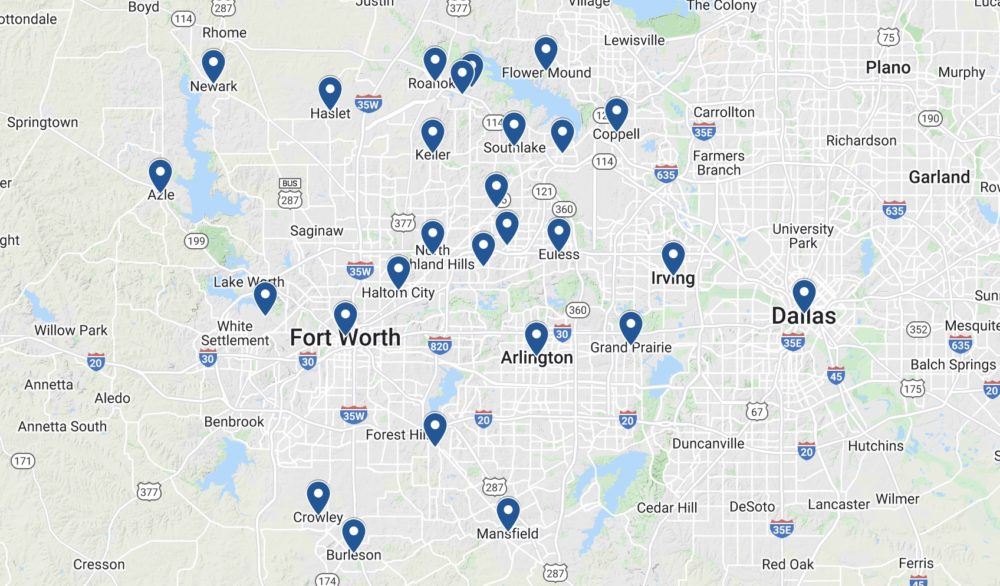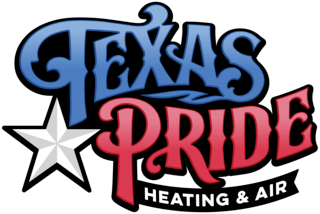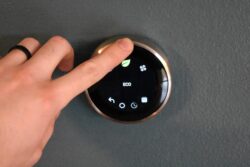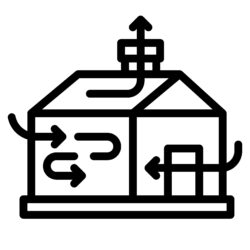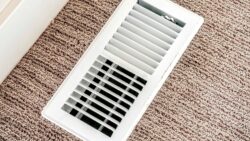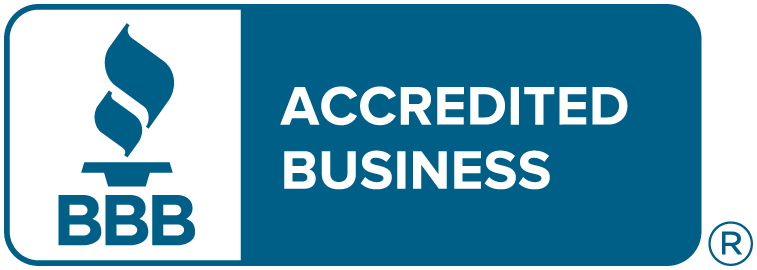TEXAS PRIDE HEATING & AIR – Energy-Saving Tips for Your HVAC System
Keep Up With Routine Maintenance
First things first, conduct a routine HVAC maintenance inspection with Texas Pride Heating & Air. You won’t benefit from the other energy-saving tips as much if your system isn’t working properly to begin with. Follow a regular maintenance checklist to tick all the boxes required for your HVAC.
If you don’t already have a proactive maintenance program for your system, it’s a good idea to schedule a semi-annual service with Texas Pride Heating & Air, your local HVAC company. Our professionals can make sure your system is operating at its most efficient settings and that parts and other components are in working order.
Check Your Optimum Temperature Range
Many HVAC systems have optimum temperature ranges that ensure you’re using energy efficiently. Consult your owner’s manual or chat with your Texas Pride Heating & Air service technician to find the most energy-efficient temperature range for your system.
It’s also a good idea to avoid fluctuating temperatures too frequently. Don’t turn the AC way down on a hot day, or way up on a cold day, as this can make your HVAC system work harder.
The U.S. Department of Energy recommends keeping the heat set to 68 degrees Fahrenheit in the winter and 78 degrees Fahrenheit in the summer. When you’re not home, you can reduce or increase the temperature to keep your HVAC system running minimally. Setting your thermostat back 10 to 15 degrees for eight hours at a time during the heating season can save you 5% to 15% in heating bills each year.
Upgrade Your Thermostat
The less your HVAC system has to work to maintain temperature levels in an empty home, the more savings you’ll see on your heating and cooling bill. There are a few ways to adjust your home’s temperatures to save money without a hassle: install a programmable or install a smart thermostat from Texas Pride Heating & Air. These simple knacks can go a long way in helping to reduce energy use when you’re not home.
Programmable Thermostats
Programmable thermostats automatically lower or raise your thermometer on a set schedule. Initially, you’ll input your preferences at pre-set times. Some programmable thermostats have a 7-day programming option that allows you to customize each day’s settings, while others have a 5-2-day, a 5-1-1-day, or a 1-week program.
Smart Thermostats
Smart thermostats are more advanced than programmable thermostats, allowing you to control the temperature from your smartphone. Some thermostats even learn your lifestyle habits and automatically adjust to keep your home as efficient as possible.
Seal Your Home From Drafts
It’s important to stop air infiltration in colder winter months and during the AC season; any air leak in your home robs your HVAC system of efficiency since that heated or cooled air slips right through nooks and crannies. Ensure the following are in place to get rid of drafts with the help of Texas Pride Heating & Air:
- Check that all windows are shut
- Caulk the immobile parts of your windows and doors
- Apply weatherstrips to moveable components of your windows and doors
- Check for open stud cavities and drywall gaps and seal them up
- Insulate any recessed lighting
- Search for loose ductwork and seal with aluminum tape or mastic sealant
- Beef Up Your Insulation
- While you’re checking for open stud cavities and drywall gaps in your walls and attic, it’s also a good time to inspect your insulation for spots where heated or cold air could escape. Texas Pride Heating & Air knows that proper insulation is crucial for energy efficiency. The EPA estimates that you might be able to save around 15% on your heating and cooling costs simply from sealing up drafts and adding insulation to your home. Add insulation in your attic, in the floors above a crawl space, and around the rim joists in your basement.
If you’re unsure about your home’s insulation levels, consult with Texas Pride Heating & Air, your local energy auditor, or insulation professional for guidance.
Change Your Air Filters Regularly
Air filters collect all kinds of pollen, pet fur, dirt, and dust, so checking filters regularly is an absolute must if you want your HVAC system to last. Change your HVAC system’s air filters once a month in the summer and every two to three months in the winter, or as directed by the furnace or filter manufacturer.
However, if you have multiple pets, allergies, and/or asthma, you’ll want to replace your air filters every 20 to 45 days. If you have no pets and live in an average-sized suburban home, you can get away with replacing them around every 90 days.
Keep Your Vents Clear and Clean
Even the cleanest filters are no match for a dirty or obstructed ventilation system. Keep furniture, draperies, bookshelves, rugs, and more away from vents, and routinely vacuum and wipe away any dust that accumulates near your supply vents to let the airflow easily through your duct system.
You can use a damp, soapy rag and an old toothbrush for narrow slots. Once clean, dry the vent slats to prevent standing water. And when removing the vent cover to clean it, remember to turn off your HVAC system to prevent dust from blowing into your face!
Use Curtains, Blinds, and Drapes to Help Control Temperatures
Window coverings can significantly affect your home’s heating or cooling load. Energy Saver states that you can reduce heat gains by up to 33% and reduce heat loss by 10% simply from installing draperies.
In cooler months, harness the sun’s free solar heat by keeping curtains, blinds, or drapes open on south-facing windows during the day to allow sunlight in. Close them at night to add an extra layer of insulation between the glass and your home’s interior. And in the summer, keep window coverings closed during the day to reduce temperatures.
Crank the Fans
Ceiling fans work in the summer and winter to help regulate indoor temperatures. Fans have a cooling effect on the skin and help make it feel less hot when the sun blasts full heat. On cold days, switching fans to a clockwise, circular motion helps push hot air that has risen from your heater back down to the floor.
Paired with your HVAC system, you can lower your thermostat setting by as much as 4 degrees Fahrenheit, which amounts to around 4% to 6% savings on your cooling costs.
Limit Indoor Cooking and Drying in the Summer
Backyard barbecues are all the rage in the summer for a reason: they keep the heat out of your house! Avoid using your oven and stove top when it’s already hot outside. If you must use a hot appliance, only do so when it’s cooler outside, like in the early mornings or late evenings. The same goes for your dryer, which can turn even the coolest, dark room into a sauna.
Taking these steps to ward off the heat will keep your tired HVAC system from having to work that much harder just to cool the house.
Upgrade Your HVAC System with Texas Pride Heating & Air
If your HVAC system is over ten years old, or you can’t seem to squeeze any more life out of your HVAC, then it might be time to replace your system entirely. An outdated HVAC system will use up more energy and deteriorate, making it work less efficiently. By upgrading to an ENERGY STAR-rated HVAC unit from Texas Pride Heating & Air, you can easily save up to 20% on your heating and cooling bills.
ENERGY STAR products must meet government standards that ensure their performance is superior to standard products. When in doubt, contact Texas Pride Heating & Air, your local HVAC pro, for recommendations, as well as an explanation of HVAC energy efficiency ratings.
Energy-Efficient HVAC Rating Systems
There are a number of rating systems in place that measure the efficiency of HVAC systems, which are incredibly useful when buying a new unit or evaluating your existing system. Here’s how the various ratings systems break down:
Seasonal Energy Efficiency Ratio (SEER): Measures cooling efficiency. Higher SEER ratings indicate high efficiency.
Energy Efficiency Ratio (EER): Measures cooling efficiency for window units or portable systems.
Heating Seasonal Performance Factor (HSPF): Measures heating efficiency for heat pumps.
Frequently Asked Questions
How often should I get my HVAC serviced?
HVAC systems should be serviced annually, no matter which type of system you have. This service visit should include an inspection, cleaning, and regular maintenance tasks, like flushing the boiler. The best time to do this varies on the system. For heating-based systems, call in a technician sometime during the fall. For air conditioners, go for the spring. Basically, schedule the service call before you plan on amping up HVAC system usage for the season.
Areas We Serve
